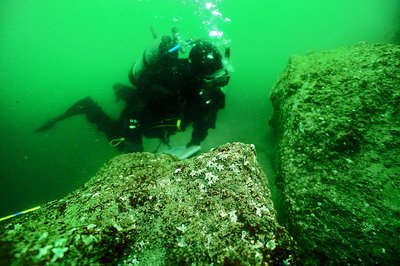
On a recent recreational swim near Florence, diver Diana Hollingshead was astonished once she realized what she was seeing underwater: thousands of healthy juvenile sea stars. Due to sea star wasting syndrome, a disease that causes sea stars (aka starfish) to develop lesions, fall apart and die in a matter of days, the discovery of healthy sea stars was an encouraging one.
Historically, sea stars have been a common sight on the Oregon coast, but this is no ordinary year: Starting around April, sea star wasting syndrome appeared in Oregon tide pools, and the disease quickly spread, affecting up to 60 percent of sea stars in some areas.
Hollingshead, co-owner of Eugene Skin Divers Supply, reported the discovery to the Oregon Coast Aquarium in Newport after she spotted the juvenile sea stars. “They were so plentiful that they were mistaken for acorn barnacles at first,” Hollingshead says.
Sea stars all along the West Coast have been afflicted by this syndrome, so the discovery of the juvenile sea stars in Oregon could be a promising sign. According to Bruce Menge, a professor of marine biology at OSU, the discovery of the juvenile sea stars “may be encouraging,” but more research is still needed.
“The disease is ongoing,” Menge says. And such a discovery is not necessarily an indication that the wasting syndrome is tapering off. “Judging from their size, they may actually be from last year,” he says.
Sea star wasting syndrome is a poorly understood phenomenon, and scientists remain unsure of what causes it. Some connection has been made between the wasting syndrome and rising ocean temperatures, though that connection is not yet clear. “We’ve just got to see what’s going to happen,” Menge says.
The juveniles were so numerous that scientists on the dive team from the Oregon Coast Aquarium had to improvise a method in order to count them.
“I’ve never seen sea stars in this density before,” says Stuart Clausen, assistant curator of fish and invertebrates at the aquarium, who checked out the sea star sighting after Hollingshead reported it. “It was a surprise, a very pleasant surprise.”
Clausen emphasized that “nothing is definite yet” and called it “a continuing research project.” The dive team at the aquarium plans to return to Florence regularly to monitor the sea stars, but at this point they are too small for biologists to identify their species. — Daemion Lee